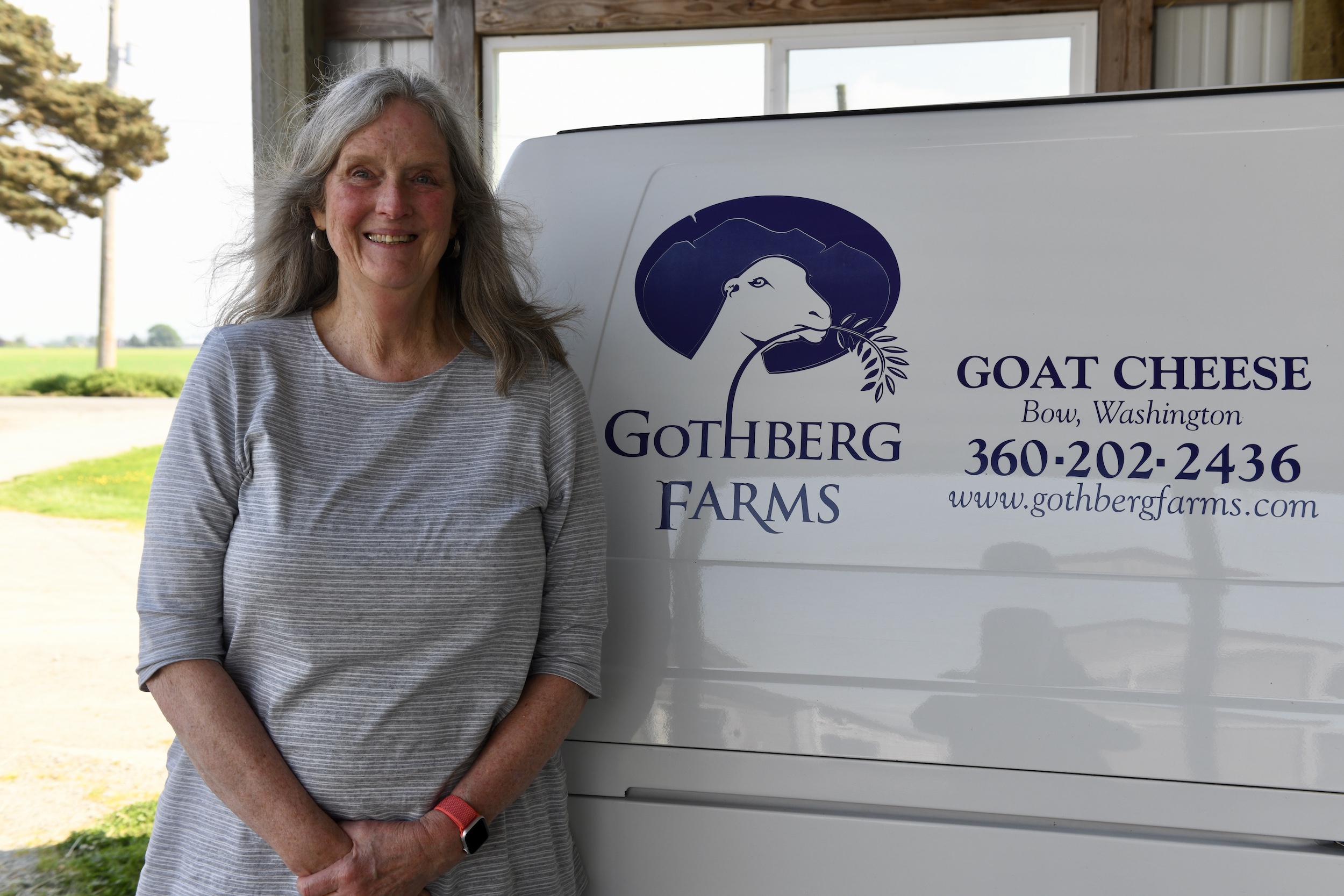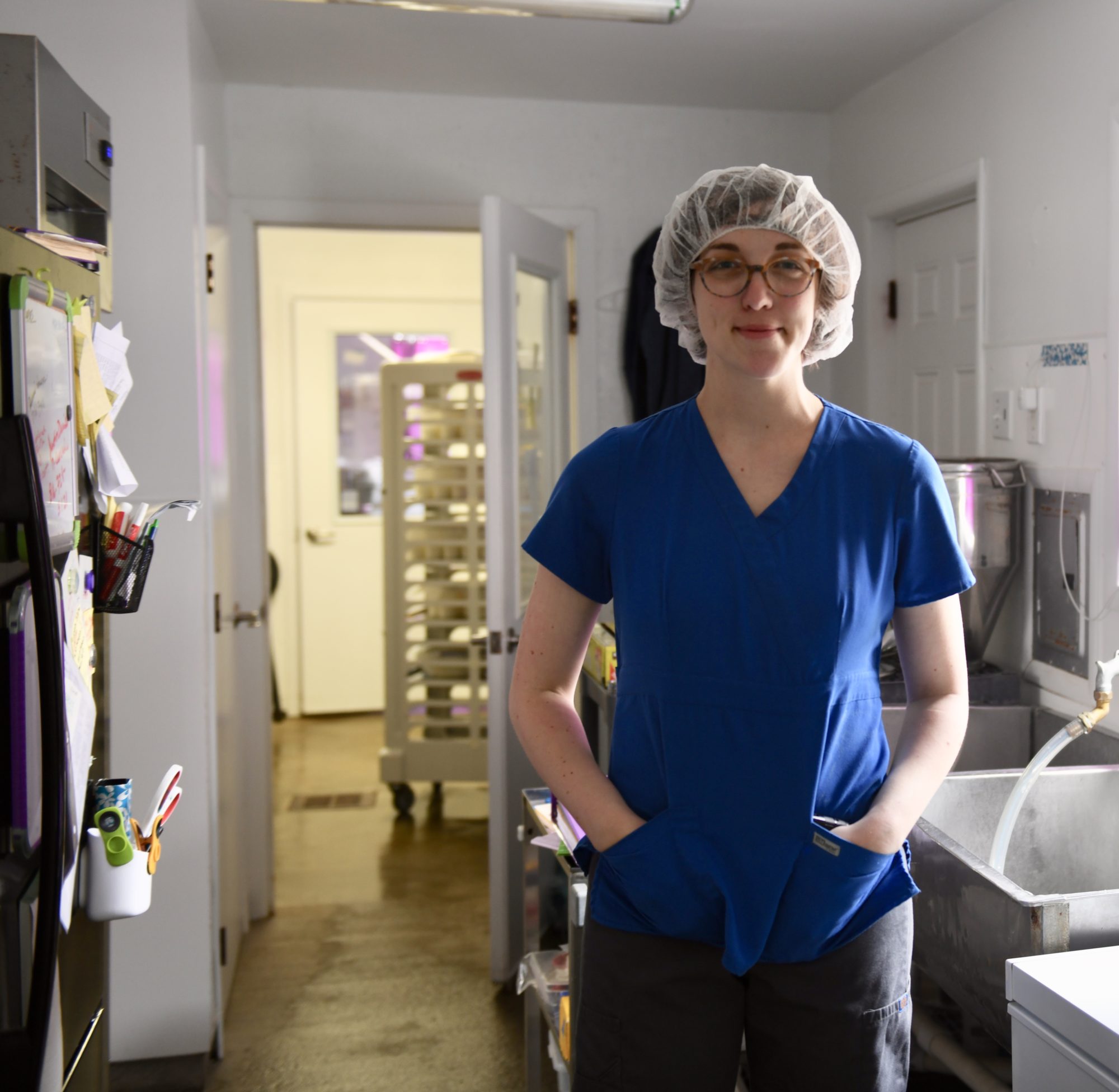
Three miles inland from Samish Bay in northern Skagit Valley, Gothberg Farms sits down a quiet road surrounded by expansive fields. Don’t bother relying on GPS to get there, however. It rarely works out. “Google maps always takes people to my neighbor’s house,” owner Rhonda Gothberg tells me on the call I made for exactly that reason. “Look for the tan and white buildings further down. That’s us.”
Gothberg is a tall and friendly Texan, with a firm handshake and a sharp intellect. She and her husband, Roy, purchased the 40 acres of land in 2001 when it was a cow dairy. Coming from a three-decade career in nursing and a stint as a realtor, the change in lifestyle and pace was welcome. “I could have been the head of a healthcare company,” she asserts, “but enough was enough.”
Gothberg’s dairy adventure began shortly after completely renovating their home, when she purchased her first animal. Then…more. “I was hooked,” she laughs. “I bought another, then another.” Today, Gothberg cares for a herd of 40 Lamancha goats, with half being used for milking each day. She prefers the breed for their personality and high milk production. “I just love them,” she says. One of the oldest, named Ditto, is nearly 14 years old and still milking. Gently scratching her on the head, Gothberg smiles. “She’s still going strong.”

Gothberg’s affinity for her animals goes beyond mere fondness. She feels a responsibility to care for her animals in the best way possible. From specially designing the barn in which they live to the custom feed she developed to nourish them (called, of course, “Gothberg goat”), these goats are central to her love of what she does. As she says, “These goats aren’t merely animals for milk. They’re part of us.”
Since achieving their Grade-A goat dairy license from the Washington State Department of Agriculture in 2004, Gothberg and her team have been making, aging, and packaging cheese in their on-site dairy. The staff hovers around seven or eight employees, depending on the season.
Gothberg recently made the decision to milk the animals year-round, allowing her to keep her employees on the payroll, rather than losing them to temporary work in the off-season. “I’m happy to be able to provide a paycheck to everyone,” she says. “Plus, I have great people working with me. I’d hate to lose them to a part-time job.”

Head cheesemaker Lindsey Gerth makes around 175 pounds of cheese a week using the dairy’s small 52-gallon vat, a quantity Gothberg is content with. “We’re as big as we care to be,” she says. “We can maintain the quality of our cheeses this way.”
Their first offerings were fresh chèvre and gouda. Now the farm offers nearly 32 styles including fresh goat milk ricotta, a delicious version of Caerphilly, raw-milk cheddar, and others. A consistent favorite is the intensely sharp Woman of La Mancha, their take on Manchego. Cured with olive oil and Spanish paprika, the wheels are aged for over a year to give the cheese the sharp, intense personality people love, including Gothberg herself. “I make cheeses I like to eat,” she confidently asserts. “I don’t make them to satisfy any market.”
Their customers include local chef accounts and farmers markets. They also offer customers on-site purchasing. Under the awning, a weathered armoire serves as a self-serve station called the “honor box.” Inside, a small refrigerator stocked with pre-wrapped cheeses accompanies a mason jar with a handwritten “money jar” label. Visitors use the pricing sheet and make payments as needed.

Maintaining the farm and facilities in addition to the animals is quite the workload, especially as Gothberg ages. “It’s getting harder and harder,” Gothberg says, sighing. “I don’t have a department for this or that. It’s just me.” Even with her husband handling all the support tasks, it’s a herculean effort.
Talking about the future is difficult for Gothberg. A part of her knows there will come a time to hang up the cheesemaking apron. “Everything has a last day somewhere,” she says, reflecting on the truth in her statement. She’s not completely sold on the idea, though. After a quiet moment, she smiles and looks around.
“I can’t imagine not doing this.”




